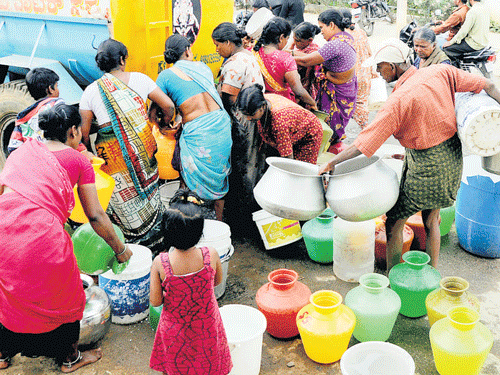
With summer setting in, complaints of inadequate or no water supply has already increased by 20 per cent at the Bangalore Water Supply and Sewerage Board’s (BWSSB) call centre since the first week of March.
Unlike the previous year, which saw a severe water crisis after reservoirs ran dry due to the failure of monsoon, this year, the BWSSB is ensuring that there is enough water for all areas.
Taking serious note of water crisis, the BWSSB Engineer-in-chief (EIC) T Venkataraju has issued a circular to all the executive engineers of various zones of the Board to operate the valves as per the instructions.
The circular states that in case of shortage of water in any area, at any point of time, the EIC has to be intimated.
If anybody operates the valves according to their whims and fancies and without the knowledge of the EIC, the matter will be seriously viewed and the officer concerned will be held personally responsible for the lapses.
He said that each division would be supplied an additional 10 million litres of water per day (mld) as the Board now has the responsibility of supplying over 1,290 mld.
Nine sub-divisions
“After re-organisation of the Board, the number of sub-divisions has increased from six to nine. With the increase in the number of consumers, three new sub-divisions were created to supply additional water from IV stage II phase,” he added.
The EIC said the complaints over non-supply of water has slowly started to pour in and the Board was taking steps to solve the issues.
He said that of the BWSSB’s 65 water tankers, nearly 30 tankers are used to supply water to various areas in the City including slums where residents do not have a legal connection.
Besides this, there are still 35 tankers available for additional supply. People have to pay Rs 360 for a tanker which has a capacity of 6,000 litres.
As per the BWSSB's record on the quantity of water supplied to each sub-division, south-west division receives maximum supply of 205 MLD followed by south-east—173 MLD, north-west—162 MLD, south—153 MLD, north-east—140 MLD, central—137 MLD, east—120 MLD, west—110 MLD while north receives just around 90 MLD.